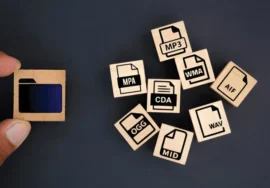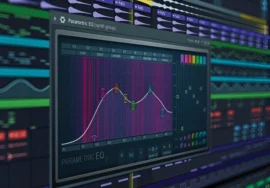
A Step-by-Step Guide
Creating professional-quality beats is an art and a science that requires combined creativity, technical skill, and a deep understanding of music theory. Whether you’re an aspiring producer or a seasoned musician looking to expand your skills, this comprehensive guide will walk you through the essential steps to crafting high-quality beats.
Step 1: Gather the Equipment
- Digital Audio Workstation (DAW): This is the software that will serve as your command center for beat production. Popular options include Ableton Live, FL Studio, Logic Pro, and Reaper.
- Audio works with: This device connects your instruments and microphones to your computer, allowing you to record audio.
- Studio Monitors: These speakers are designed for correct sound reproduction, ensuring you hear your beats as they were intended.
- MIDI Keyboard: This controller allows you to input musical notes and play virtual instruments within your DAW.
- Headphones: A good pair of headphones is essential for mixing and mastering your beats.
- Microphone: If you plan to record vocals or other instruments, you’ll need a quality microphone.
Step 2: Learn Music Theory Fundamentals
A solid understanding of music theory is crucial for creating well-structured and interesting beats. Familiarize yourself with concepts such as:
- Scales: The distinct patterns of notes used in music.
- Chords: Combinations of notes played.
- Key Signatures: The system used to show the key to a piece of music.
- Time Signatures: The number of beats in a measure and the note value of each beat.
- Rhythm: The pattern of sounds and silences in music.
Step 3: Develop Your Ear
Training your ear to recognize distinct sounds, intervals, and chords is essential for creating compelling beats. Practice listening to various genres of music and try to name the distinct elements that make up the tracks.
Step 4: Choose a Genre and Style
Deciding on the genre and style of your beats will help you focus your creative efforts and choose the sounds and techniques. Consider the music you enjoy listening to and explore different subgenres within those categories.
Step 5: Create a Drum Pattern
The drum pattern is found in most beats. Experiment with distinct patterns, tempos, and fills to find a rhythm that suits your desired style. Pay attention to the dynamics and accents in your drum patterns to create interest and excitement.
Step 6: Add baselines
The baseline provides the low-frequency foundation of your beat. Experiment with different baselines, scales, and rhythmic patterns to complement your drum pattern and create a solid groove.
Step 7: Incorporate Melodies and Harmonies
Melodies and harmonies add depth and complexity to your beats. Use your knowledge of music theory to create catchy melodies and chord progressions that complement your drum pattern and baseline.
Step 8: Choose and Sample Sounds
Sampling is a common technique used in beat production. Explore different sample libraries and find sounds that match the style and atmosphere of your beat. Experiment with different sampling techniques, such as chopping, stretching, and reversing, to create unique and interesting sounds.
Step 9: Mix and Master Your Beat
Mixing involves balancing the levels of different elements in your beat, such as the drums, bass, melodies, and effects. Mastering involves applying final adjustments to the overall sound of your beat, such as compression, equalization, and limiting.
Step 10: Get Feedback and Iterate
Seek feedback from other musicians or producers to get an objective perspective on your beats. Use their feedback to improve your skills and iterate on your creations.
Additional Tips for Making Pro Beats
1. Learn from the Masters: Study the work of renowned producers and analyze their techniques, sound choices, and production workflows. This can provide valuable insights and inspiration for your music.
2. Experiment with Different Genres and Styles: Don’t limit yourself to a single genre. Experiment with different sounds, techniques, and production styles to expand your creative horizons and discover new possibilities.
3. Practice Regularly: The more you practice, the better you’ll become at producing beats. Make time for regular practice sessions and challenge yourself to try new things.
4. Network with Other Producers: Connect with other producers in your local area or online communities. Collaborating with others can help you learn new techniques, gain exposure, and build a support network.
5. Stay Up-to-Date with Industry Trends: Keep up with the latest trends and developments in music production technology and techniques. This will help you stay relevant and competitive in the industry.
6. Use High-Quality Samples and Plugins: Investing in high-quality samples and plugins can significantly improve the sound of your beats. Explore different options and find the tools that best suit your needs and style.
7. Develop Your Own Unique Sound: Don’t be afraid to experiment and develop your unique sound. This will help you stand out from the crowd and attract a dedicated fanbase.
8. Be Patient and Persistent: Producing high-quality beats takes time and effort. Be patient and persistent, and don’t get discouraged by setbacks. With dedication and practice, you can achieve your goals.
9. Consider Online Courses and Tutorials: There are many online courses and tutorials available that can help you learn new production techniques and improve your skills. Explore different options and find a resource that suits your learning style and pace.
10. Enjoy the Process: Most importantly, have fun and enjoy the process of creating music. The more you enjoy what you’re doing, the more motivated you’ll be to continue learning and growing as a producer.
By following these tips and continuously learning and improving your skills, you can create professional-quality beats that will impress listeners and help you achieve your goals in the music industry.
Conclusion
Creating professional-quality beats requires dedication, practice, and a willingness to experiment. By following these steps and continuously learning and improving your skills, you can develop your unique sound and achieve your goals as a beat producer.





